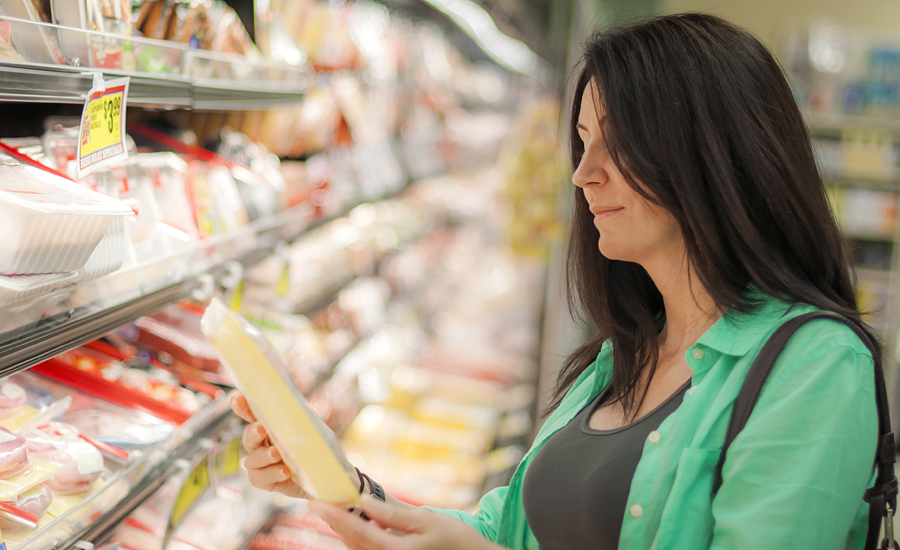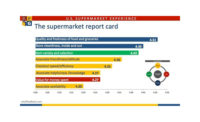The average American shops for food twice a week, and collectively spends about $600 billion a year at the checkout. And, with brick-and-mortar outlets increasingly trying to outsell their web-based competitors, it’s critical for food retailers to discern precisely when and where to offer that ethnic cooking demonstration or that free taste of some new protein-enriched paleo latte mix.
“We’re interested in how the customer’s journey evolves during a shopping trip,” says Szu-chi Huang, associate professor of marketing at Stanford GSB, Stanford, Calif.
In the past, such investigations were constrained by the difficulties of unobtrusively observing shoppers’ actions as they moved through the aisles. But now, thanks to the development of miniature video cameras, researchers can almost see exactly what shoppers themselves see as they peruse the shelves. That’s why researchers at Stanford GSB worked to reveal the secret life of a supermarket shopper.
“With the new technology, we can track how much time they spend on each item and how much time they spend moving from one item to another,” Huang says. “We can study the behavior involved in making a decision. We can capture indecision as well — when they reject a choice and decide to put something back.”
Additionally, wearable cameras enable researchers to track patterns such as when consumers shift focus from their shopping lists and begin looking at unplanned or unfamiliar product choices.
Power listing
One of the most potent influences upon grocery store shopping behavior is the shopping list, according to this study conducted by Huang and co-authors Jacob Suher, associate professor of marketing at Portland State University, Portland, Ore., and Leonard Lee, professor of marketing at the National University of Singapore, Singapore.
Whether or not consumers utilize a pre-existing list is a key factor in the fluctuation and intensity of their motivation to complete their original shopping goals.
In one experiment, researchers analyzed visual data on the behavior of 237 shoppers outfitted with video cameras, a little more than a third of whom utilized shopping lists. Those who carried lists exhibited a gradual straight-line deceleration, in which the time interval between their product choices increased slowly over the course of their excursions. Those who shopped without a written list, in contrast, displayed a curvilinear pattern, in which their time between choices rose rapidly until slightly more than halfway through the trip, and then just as sharply decreased until checkout.
The list-makers tended to stay on task for most of the shopping trip, resisting the distractions and stimulation provided by the store’s environment until they neared the end of their excursions.
“The effect of the shopping list is that it allows you to see your progress,” says Suher.
Why the listless lose focus
Those who didn’t use a list more quickly became distracted from their goals.
“They don’t have an anchor to keep them on track,” Huang adds. “They lose focus in the middle of the trip and start browsing.”
But, after dallying, they either form new goals or eventually remember their original goals haven’t yet been completed, and speed up their choices in an effort to finish.
In another experiment, subjects shopped in an online grocery store rather than a physical one. But, even in a virtual environment, list-makers still showed the same gradual deceleration, while those without lists saw their motivation ebb in the middle of the trip and then pick up again at the end.
“When you have a list, your plans are dominant at the beginning,” Suher says. “The store environment eventually leads to a slowdown and takeover, but that occurs earlier when people don’t have a list.”
The researchers also found that the structure of shopping lists affects shoppers’ motivation. When a list is designed to allow shoppers to cross off completed items, motivation — as indicated by the speed at which they make choices — gradually decreases.
“People like to cross things off the list,” Huang says. “It highlights the progress we have made, which is very motivating.”
As shoppers got closer to completing the list and found fewer opportunities to cross off items, however, they slowed down. But, when they used a list format that highlighted the remaining items to be acquired, their speed and motivation actually increased as they shopped.
“With that sort of list, people become more focused as they get closer to the end,” Huang says. “We were able to flip their behavior and reverse the usual trend, so that they go from slow to fast.”
Optimized distractions
The researchers’ findings could help retailers design grocery stores that provide optimal experiences for different types of shoppers. Those who don’t use lists — or who instead utilize the configuration of the store and location of products on the shelves as a list — might be more interested in watching a cooking demonstration or trying product samples if those distractions are placed the middle of the store. List-makers, in contrast, probably would be more open to new experiences and marketing pitches closer to the checkout.
“Shopping momentum is important, and you don’t want to disrupt that,” Suher says. “But, there are times when you do want to interrupt a shopper, and that’s when they would naturally want to slow down.”
Follow-up studies could shed more light on what happens when shoppers go off track.
“We’re curious about the planned vs. the impulse purchase,” Suher adds. “When people explore a store, are they just going to buy things that they don’t really need, or are they instead forming new goals? We can’t tell from this data whether they’re just trying things out of curiosity, or whether they’re realizing that they actually need things that weren’t on their list.”





